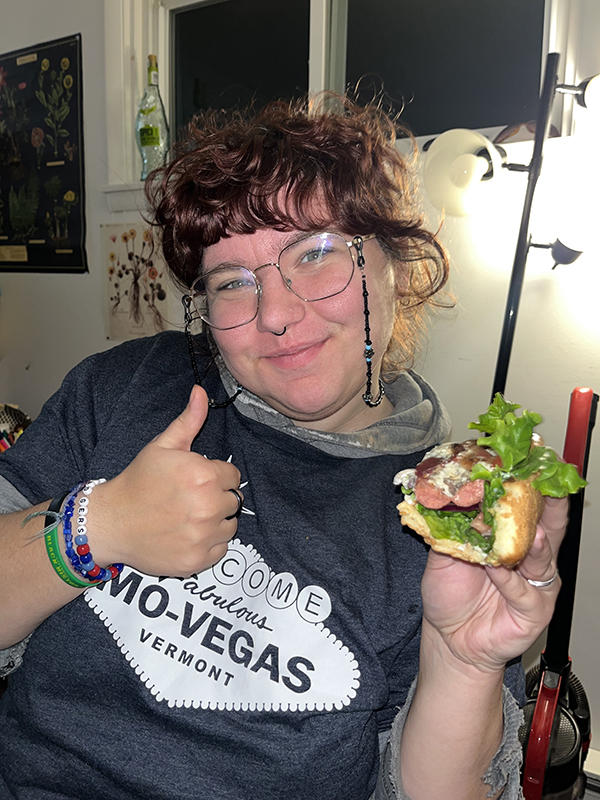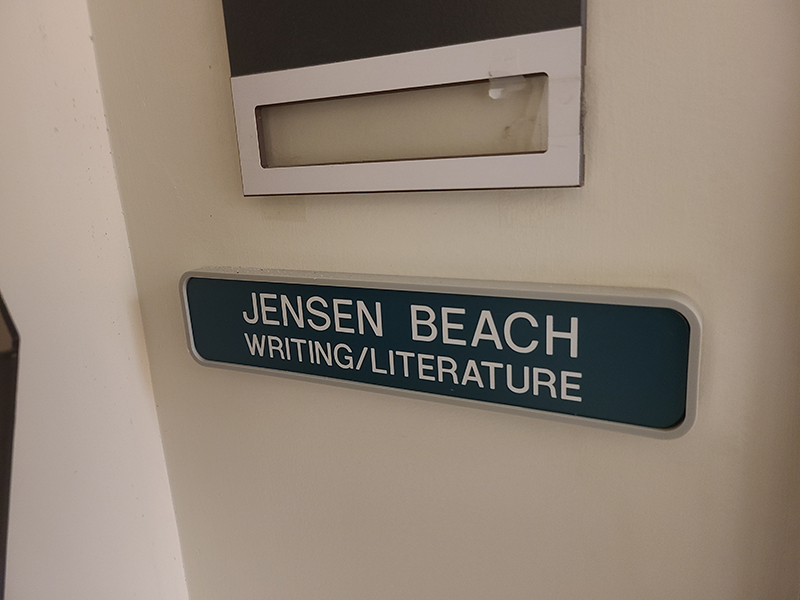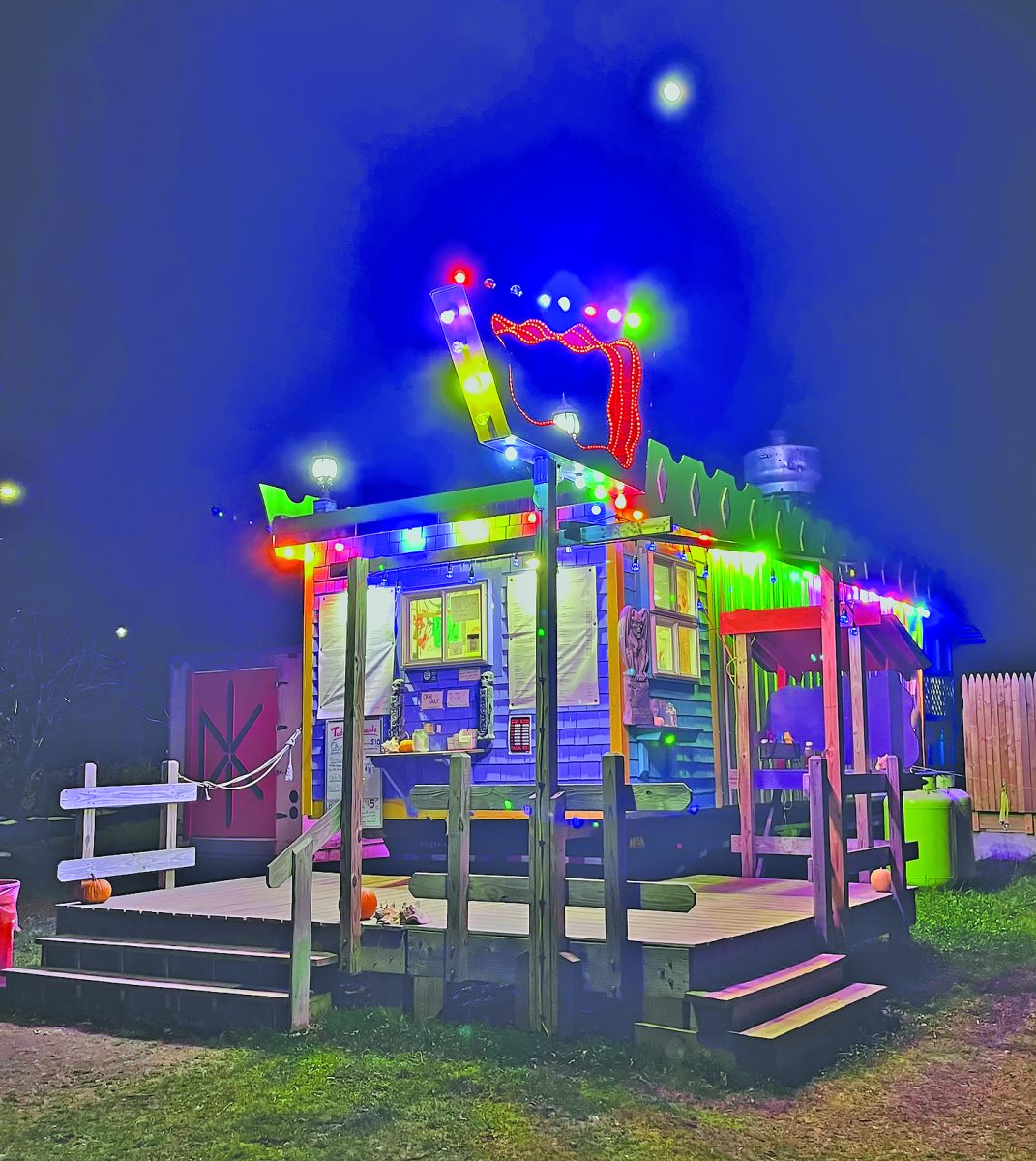Three professors at JSC have just been awarded another year’s worth of grant money to continue their ongoing research projects.
The money comes from The National Institute of Health (NIH) through the Vermont Genetics Network (VGN) in the form of INBRE (Idea Networks of Biomedical Research Excellence) awards. If that stacked up crash of acronyms sounds confusing, consider the convoluted and congested avenue Drs. Liz Dolci, Hans Haverkamp, and Gina Mireault had to navigate to get their funding.
“The instructions for writing these NIH grants that we print out,” says Haverkamp, “are about an inch thick, double-sided, single-spaced.” Whereas many larger institutions have a full-time, dedicated faculty member to assist in the crucial yet confounding task, these JSC professors must oversee their own grant writing.
“When you’re writing a grant you have to do this very intense justification for why your hypothesis makes sense in the context of current data that are available in your area of study and in the context of your institution,” says Mireault, “You have to convince the reviewers that it is a feasible study.”
Grant writing is the marriage of cogency and concision, demonstrating skills of laconic speech alien in most other forms of prose, with every moving part included, justified for a singular goal, a mimicry if not homage to the very world of nature these scientists study.
“To me writing a grant, as hard as it is, as many hours as it takes, as frustrated as I can get, always on the edge of getting it done on time, it’s the ultimate intellectual challenge,” says Haverkamp.
“Writing a good grant is the most creative, intellectually stimulating thing I do as faculty. Period,” says Haverkamp.
“I would take that a step further,” says Mireault, “I would say that science is one of the most creative things that anybody can do.”
Mireault’s study, entering its fifth year, attests to this creativity. She studies social referencing in infants, which presents the interesting question of how you determine and measure what a baby is thinking. Her research focuses on how infants learn what is funny, whether they learn it from their caregivers or perhaps somewhere else.
“Infants seem to have a surprising sophistication for humor, even as early as nine months of age,” says Mireault. “ If you pour water on a stuffed animal, a nine-month-old may find that hysterically funny.”
Haverkamp’s study focuses on the dilation of the airways in asthmatic adults versus non-asthmatic adults. “My overall question [is] in an asthmatic, if they start exercise with their airways narrowed, versus their airways dilated, versus their airways somewhere in between, how does that affect their ability to exercise and their breathing during exercise,”says Haverkamp.
Dolci is studying microbial community structure at the Vermont Asbestos Group Mine in Lowell and Eden, Vermont. “Our preliminary studies show that there are a number of very unusual bacteria living in the pit pond and aquatic systems there,” ” says Dolci.
Though the existence of strange lifeforms residing in the Northeast Kingdom has been well documented in the past by many Vermonters such as Frank Howard Mosher, the proximity of these strange bacteria to the asbestos mine, which sits abandoned in the two towns which recently voted to reject its Superfund status, certainly seems to merit further investigation.
All of these research projects are being made possible by the VGN.
“VGN is really a large grant from the NIH,”says Haverkamp. “We as faculty at the different Vermont baccalaureate colleges apply for these funds.”
“The reason for its existence is it wants to help researchers at smaller institutions like JSC be competitive for grant money,”says Mireault.
“The funds are available for five years,” says Haverkamp. “Our particular grants are only one year.” This means that this exhausting grant writing process for these particular grants becomes a yearly ritual, writing for renewals.
“When you’re applying for a renewal you have to show that you’ve made progress as well,” says Mireault. “They really want to see that you’ve presented…or published.”
Mireault is presenting in Finland this summer and in Scotland this fall.
The larger grant, from which these smaller grants are derived, was awarded to Dr. Judith Van Houten at UVM. The smaller grants which are then awarded must go to baccalaureate colleges. “UVM faculty cannot compete for these grants,” says Dolci. “They are designed for faculty at Green Mountain, Norwich, St. Mike’s, Middlebury, Johnson, Lyndon, and Castleton.”
The idea is to promote biomedical research at smaller, undergraduate institutions in traditionally underfunded states like Vermont. Also, the goal is for these smaller grants to act like seed money, to in turn allow these smaller institutions to graduate to receiving grant money directly from federal institutions like NIH.
“Faculty will get funding for several years, to get a project started so they can publish,” says Dolci, whose grant was just renewed for a second year. “ The faculty then are expected, and in some cases required, to submit a grant proposal to a federal agency like NIH…Gina [Mireault] currently has a grant pending with the NIH for significant funding…It would be a major accomplishment for a state college like Johnson to receive such an award.”




